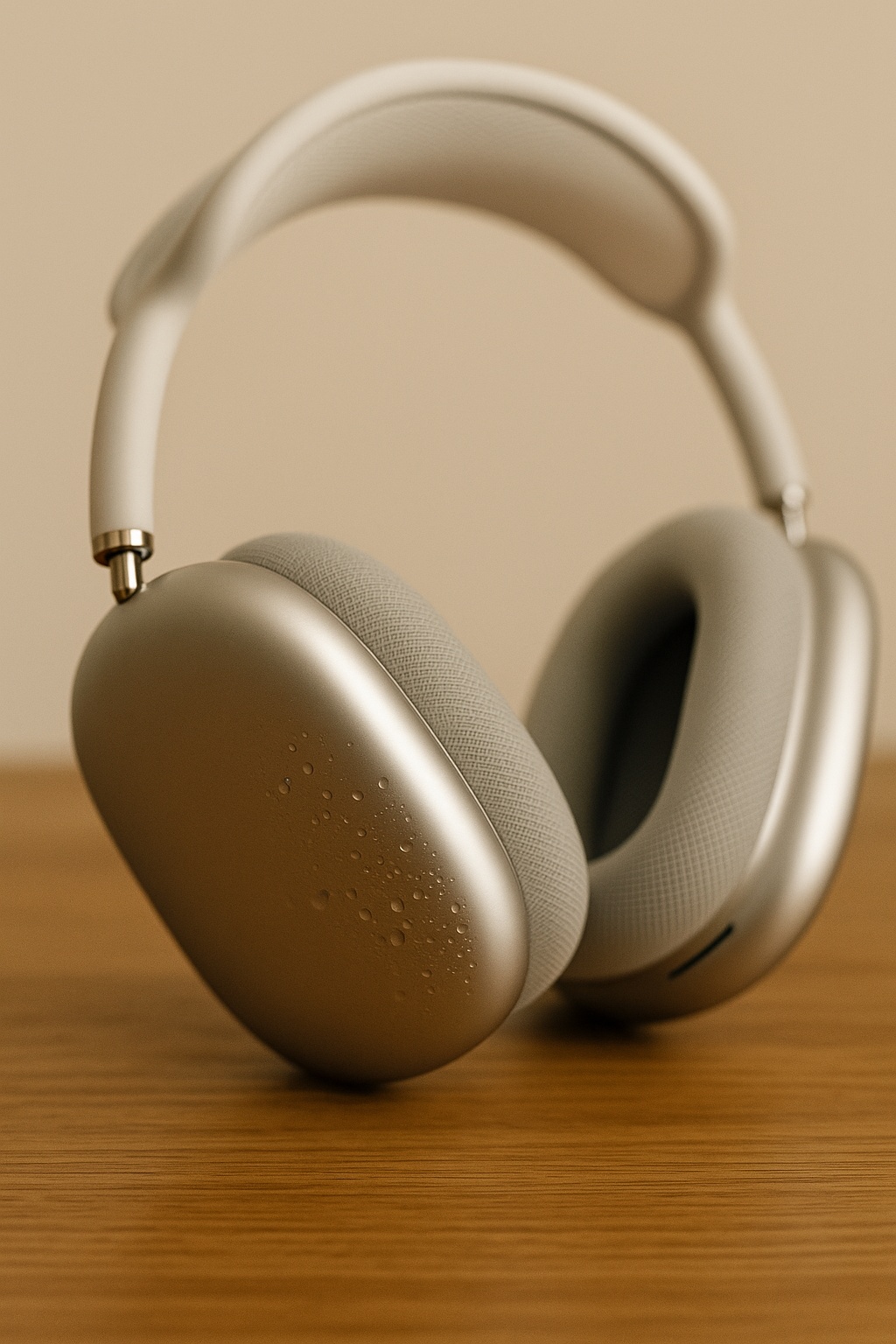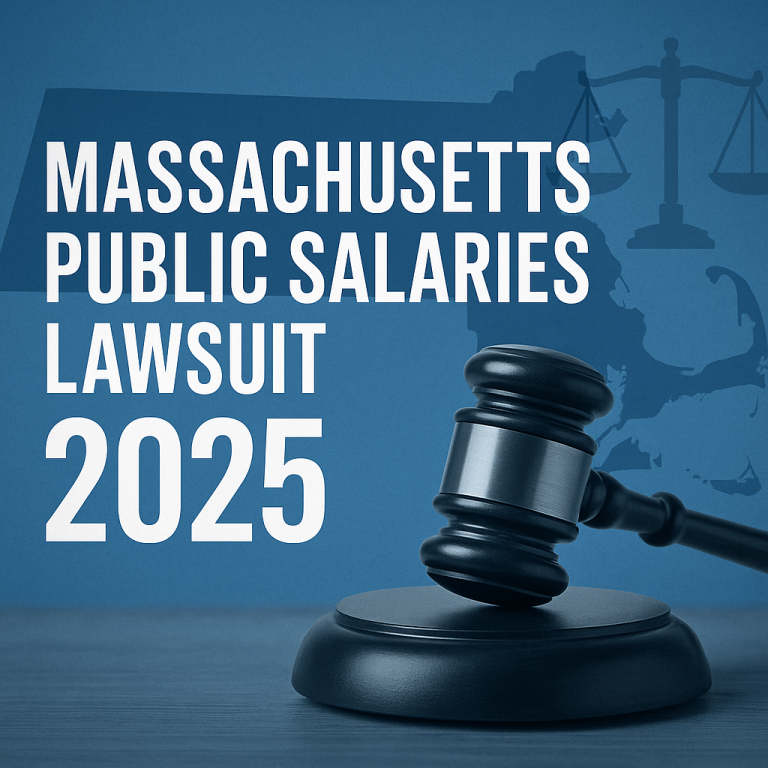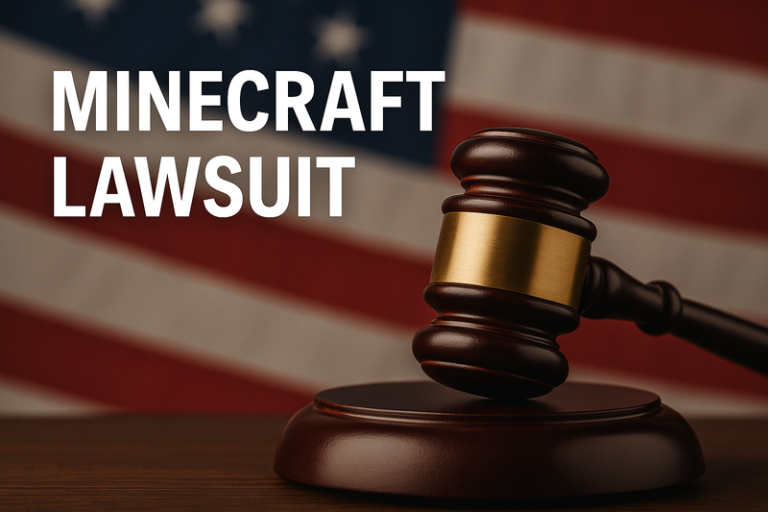When Apple released the AirPods Max in December 2020, the world noticed. These $549 headphones offered active noise cancellation, spatial audio, and high-end materials. With aluminum ear cups, memory foam cushions, and Apple’s signature ecosystem integration, they were considered a premium audio product. But behind the luxury design, a problem was brewing. Users began reporting condensation inside the ear cups. This wasn’t a rare complaint. It was widespread. The Apple AirPods Max lawsuit soon followed, and now the class action is gaining traction.
A Serious Hardware Flaw
The issue revolves around moisture buildup inside the AirPods Max. People using the headphones for everyday activities—like listening to music at their desk—noticed water droplets inside the ear cups. The design uses aluminum, a highly conductive material. When warm air from the user’s head meets the cold inner surface of the metal ear cup, condensation forms. The trapped moisture seeps into the internal components. This leads to malfunctions, poor sound quality, and ultimately device failure. Unlike sweat or environmental humidity, this moisture occurs even in climate-controlled settings.
The Metal Misstep
A Flawed Design Philosophy While aluminum feels and looks premium, it creates problems in sealed environments. Competing brands often use plastic for over-ear designs. Plastic insulates better and prevents rapid cooling that causes condensation. Apple’s use of metal, while visually impressive, made the headphones vulnerable to temperature shifts. As a result, the AirPods Max become a mini moisture chamber. The very materials that gave the product a luxury feel now lie at the heart of the problem. Engineers and product reviewers agree—the design overlooked basic thermodynamics.
Online Outcry Turns Into Legal Action
Users were quick to share their concerns. Reddit threads and YouTube videos documented the moisture buildup in detail. By early 2021, dozens of reports surfaced on Apple’s own forums. Photos of fogged drivers and water-damaged cushions appeared frequently. But Apple didn’t address the complaints publicly. No statements. No updates and No repairs. That silence fueled user frustration. Eventually, this frustration moved from the internet to the courtroom.
AirPods Max Class Action Lawsuit Filed in 2025
On April 23, 2025, Arthur Apicella filed a class action lawsuit in the Eastern District of New York. The Apple AirPods Max lawsuit claims that Apple knowingly sold a defective product and failed to disclose the condensation issue. Apicella’s lawyers argue that Apple had access to user reports and internal data but kept selling the headphones without warning. The lawsuit seeks class certification, which would allow thousands of users to join the legal effort.
What the Apple AirPods Max Lawsuit Alleges
According to the lawsuit, Apple violated consumer protection laws by failing to warn buyers about a known flaw. It also accuses the company of breaching warranty agreements and defrauding customers through omission. Apicella demands Apple provide full refunds, repairs, or replacements for affected users. The lawsuit also seeks punitive damages and public disclosure of the defect. If successful, the case could cost Apple millions—and set a precedent for how premium hardware failures are handled.
Apple’s Response
Deflecting the Blame Apple has not issued an official response to the class action. However, some customer service interactions suggest the company blames misuse. Apple representatives reportedly claim condensation results from intense use, workouts, or external humidity. Users disagree. Many say the problem occurs during light indoor use. The headphones are not marketed as sport-specific devices. Still, Apple has not acknowledged the issue in product materials or on its website.
Hundreds of Users Back the Claims
This isn’t a fringe complaint. Hundreds of users have experienced the same defect. Posts on forums and product review pages confirm similar symptoms: audio glitches, battery drain, and charging issues. In some cases, the headphones stopped working completely. Despite AppleCare+ coverage, some customers were denied support due to “user-induced moisture damage.” These consistent experiences strengthen the case against Apple.
Trust Under Pressure
The AirPods Max cost over $500. At this price, consumers expect flawless function and brand accountability. The condensation defect represents more than a hardware issue—it reflects a breakdown of trust. Apple’s refusal to admit fault or offer remedies has left many buyers feeling ignored. In a brand built on reliability, this flaw and Apple’s silence speak volumes.
Experts Agree
The Flaw Is Real Tech reviewers raised red flags early. Max Tech and Unbox Therapy demonstrated the moisture issue on camera. Repair site iFixit also highlighted the condensation risk. Engineers say that placing aluminum in an enclosed, unventilated chamber without any moisture escape was a critical oversight. The feedback was consistent: Apple missed the mark on product durability.
How Apple Could Have Prevented This
The fix seems simple in hindsight. Switching from aluminum to plastic, or integrating ventilation channels, could reduce moisture buildup. Internal waterproofing would protect circuits. Even a disclaimer in the product manual would help. Yet Apple kept the same design through multiple batches and production years. This decision now lies at the center of legal scrutiny.
The Legal Foundation
Disclosure and Warranty Apicella’s legal team argues that Apple violated disclosure laws. Under U.S. regulations, companies must inform customers about known issues that affect function. Because Apple received feedback as early as 2021, and made no design changes or warnings, the lawsuit claims this is deception by omission. If proven, Apple could face financial penalties and mandatory consumer notifications.
What the Plaintiff Wants
Arthur Apicella seeks more than compensation. His lawsuit demands a full recall or replacement program for all affected units. He wants Apple to acknowledge the flaw publicly and pay for all damages—financial and reputational. The lawsuit also includes legal fees, statutory damages, and compensation for affected accessories. The court’s approval of class certification could widen the impact dramatically.
What Comes Next in the Legal Process
As of now, the case awaits class certification. If approved, Apple must release documents, emails, and engineering data through discovery. This could reveal whether the company ignored internal warnings. Apple may choose to settle early to avoid public scrutiny. If not, a trial may bring further attention to the AirPods Max condensation issue.
How to Join the Apple AirPods Max Lawsuit
If you purchased AirPods Max and experienced moisture-related issues, you may be eligible. Keep your proof of purchase, take photos of the damage, and save all communication with Apple. Class action websites like ClassAction.org and TopClassActions.com will share updates. Once certified, you can file your claim online.
Does AppleCare+ Help in This Case?
Mixed results exist. Some users successfully replaced their units under AppleCare+. Others were denied due to moisture damage being “user fault.” If you have AppleCare+, contact Apple Support and describe your situation. Be polite, but persistent. Escalate if necessary, and reference the ongoing lawsuit.
Will AirPods Max 2 Solve the Problem?
Rumors suggest Apple may release AirPods Max 2 by early 2026. As of now, no confirmed design changes exist. If Apple reuses the same aluminum build, the condensation issue may persist. If they switch to new materials, it could signal a quiet acknowledgment. Either way, the next release will face intense scrutiny.
Check for These Warning Signs
Watch for the following signs of internal moisture: droplets behind ear cushions, audio crackling, decreased battery life, or failure to charge. If you experience these issues, stop using the device. Contact support, and document your problem. This evidence may be critical if legal compensation becomes available.
Preventing Condensation (Temporarily)
Use the headphones in dry environments. After each session, remove the cushions and let the headphones air out. Store them in a breathable case, not the Smart Case. Avoid using them during workouts or in high humidity. These measures may delay damage but don’t eliminate the risk.
Want a Refund? Here’s What to Do
Apple doesn’t officially offer refunds for condensation yet. Still, some users got replacements after persistent support requests. Provide photo proof. Clearly describe the issue. Ask for a supervisor. Mention the class action lawsuit. Keep records of all communication.
User Frustration Is Everywhere
Thousands of user reviews mention the same experience. One user said, “They stopped working after one week—Apple said it was my fault.” Another wrote, “Moisture damaged my $549 headphones. Support refused to help.” These are not outliers. They’re the heartbeat of this lawsuit.
Potential Financial Impact on Apple
If the class is certified and damages are awarded, Apple could lose more than $100 million. That includes payouts, legal costs, and repair programs. But the bigger cost could be brand erosion. Premium customers expect more. If trust falters, it affects future products, not just profits.
Apple’s Reputation on the Line
Apple’s history includes several major settlements—from iPhone slowdown controversies to MacBook keyboard lawsuits. In each case, the brand’s prestige took a hit. This Apple AirPods Max lawsuit may follow the same trajectory. If consumers feel betrayed, loyalty becomes harder to maintain.
Will Apple Choose to Settle?
Apple prefers private settlements. They avoid lengthy court exposure and media coverage. If the class is certified and discovery reveals damaging documents, Apple may quickly settle. Until then, the company remains silent—and closely watched.
AirPods Max at a Crossroads
This lawsuit won’t kill the AirPods Max line. But it may define its future. Apple must either fix the design or continue facing backlash. A redesign would restore confidence. Refusing to act might lead to further legal trouble and lost market share.
Conclusion
Apple AirPods Max Lawsuit Could Reshape Consumer Expectations The Apple AirPods Max lawsuit highlights the consequences of poor product decisions and silence from major tech brands. For consumers, it’s about more than money. It’s about trust, transparency, and accountability. Apple faces a clear choice—take responsibility or lose loyalty. As this case develops, the outcome may not just influence future headphone design, but set a new benchmark for consumer rights in the tech industry.
FAQs
What is the Apple AirPods Max lawsuit about?
It’s a class action case claiming Apple sold defective headphones with a condensation issue and failed to warn customers.
Who filed the lawsuit?
Arthur Apicella filed the lawsuit in April 2025 in New York federal court.
Can I join the lawsuit?
Yes, if you own AirPods Max and experienced moisture damage. Keep documentation and follow updates on class action websites.
What is the lawsuit demanding?
Refunds, repairs, design changes, public warnings, and financial compensation.
Has Apple responded?
Apple has not issued a public response and has not acknowledged the defect officially.
Will AirPods Max 2 fix this issue?
It’s uncertain. No official specs have been announced for the second-generation model.
Where can I track updates?
Visit TopClassActions.com or ClassAction.org for legal news and eligibility.
Is Apple facing similar lawsuits?
Yes. Apple has settled past cases involving iPhones, MacBooks, and Apple Watches.
Can I still get support under AppleCare+?
Some users did. Others were denied. It depends on the support rep and how the issue is presented.




